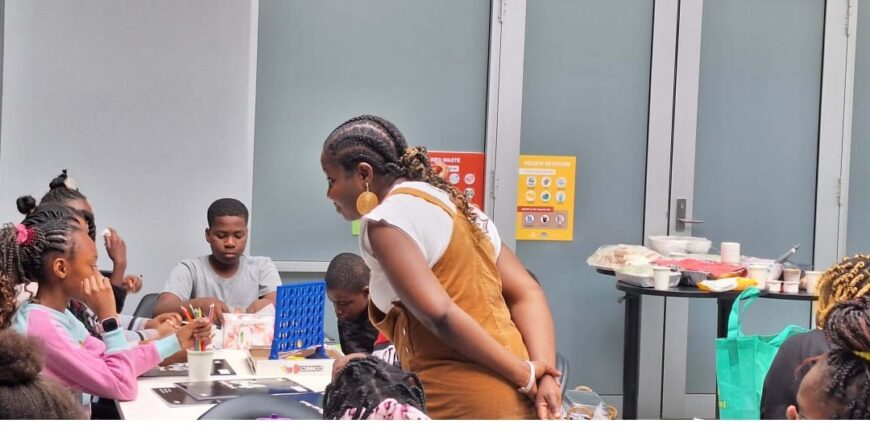MATHEMATICS - YEAR 9

- Description
- Reviews
- 1Measurement: TrigonometryPreview 40 minutes
Learning Outcomes:
By the end of the lesson, students will be able to:
1. Understand and apply trigonometric ratios (sine, cosine, and tangent) to solve problems involving right-angled triangles.
2. Use trigonometry to find unknown sides and angles in right-angled triangles.
3. Recognize the connection between triangle similarity and trigonometric ratios.
4. Apply trigonometric concepts in practical situations, such as measuring heights or distances.
-
2Measurement: Wheelchair Access (Pythagoras’ Theorem)Preview 40 minutesThis lesson is locked because you haven't completed the previous one yet. Finish the previous lesson to unlock this one.
Learning Objectives:
- Understand and apply Pythagoras’ Theorem to real-life problems.
- Calculate the length of sides in right-angled triangles using Pythagoras’ Theorem.
- Apply mathematical reasoning to assess the compliance of wheelchair ramps with Australian building standards.
- Reinforce understanding of measurement, including slopes and gradients in practical contexts.
- 3Measurement: Tall and Short (Volume of a Cylinder)Preview 40 minutesThis lesson is locked because you haven't completed the previous one yet. Finish the previous lesson to unlock this one.
Learning Outcomes:
By the end of the lesson, students will be able to:
1. Understand and apply the formula for the volume of a cylinder V= πr2h to solve problems.
2. Calculate the volume of a cylinder using appropriate units of measurement.
3. Differentiate between surface area and volume of a cylinder.
4. Solve real-world problems involving the volume of cylinders.
- 4Geometry - Similar TrianglesPreview 40 minutesThis lesson is locked because you haven't completed the previous one yet. Finish the previous lesson to unlock this one.
Learning Outcomes:
By the end of the lesson, students will be able to:
1. Explain the conditions for triangles to be similar (AA, SSS, SAS).
2. Use ratios and proportions to solve problems involving similar triangles.
3. Apply the properties of similar triangles to real-world scenarios, including the use of scale factors and ratios.
4. Calculate unknown sides and angles using measurements from similar triangles.
- 5Probability - ProbabilitiesPreview 40 minutesThis lesson is locked because you haven't completed the previous one yet. Finish the previous lesson to unlock this one.
Learning Outcomes:
By the end of this lesson, students will be able to:
1. Collect data from probability experiments and use it to estimate probabilities.
2. Understand the difference between theoretical probability and experimental probability.
3. Use relative frequencies to calculate probabilities.
4. List outcomes for two-step experiments and assign probabilities.
- 6Number - Index LawsPreview 40 minutesThis lesson is locked because you haven't completed the previous one yet. Finish the previous lesson to unlock this one.
Learning Outcomes:
By the end of this lesson, students will be able to:
1. Apply index laws to simplify expressions involving powers.
2. Express large and small numbers in scientific notation.
3. Use scientific notation to solve real-world problems.
4. Demonstrate an understanding of the efficiency of scientific notation in handling extremely large or small values.
- 7Algebra - Linear RelationshipsPreview 40 minutesThis lesson is locked because you haven't completed the previous one yet. Finish the previous lesson to unlock this one.
Learning Outcomes:
By the end of this lesson, students will be able to:
1. Calculate the gradient, midpoint, and distance between two points on a Cartesian plane.
2. Understand and apply the formula for determining the gradient of a straight line.
3. Plot linear relationships and analyze their properties such as slope (gradient).
4. Solve problems involving linear relationships in real-world contexts.
- 8Measurement : Volume of a PrismPreview 40 minutesThis lesson is locked because you haven't completed the previous one yet. Finish the previous lesson to unlock this one.
Learning Outcomes:
By the end of this lesson, students will be able to:
1. Understand and apply the formula for calculating the volume of a prism.
2. Solve real-world problems involving the volume of cuboids and prisms.
3. Determine dimensions of a cuboid when given the volume and the relationships between dimensions.
4. Connect surface area and volume calculations to practical examples.
- 9Surface Area and Volume of a CylinderPreview 40 minutesThis lesson is locked because you haven't completed the previous one yet. Finish the previous lesson to unlock this one.
Learning Outcomes:
By the end of this lesson, students will be able to:
1. Calculate the surface area and volume of a cylinder using appropriate formulas.
2. Understand the relationship between volume and surface area in real-world objects like cylinders.
3. Solve practical problems involving the dimensions of a cylinder based on given capacity (volume).
- 10Statistics: Data displaysPreview 40 minutesThis lesson is locked because you haven't completed the previous one yet. Finish the previous lesson to unlock this one.
Learning Outcomes:
By the end of this lesson, students will be able to:
1. Create back-to-back stem-and-leaf plots from a set of data.
2. Construct frequency histograms to represent data visually.
Analyze and interpret data displays to compare distributions, including recognizing skewness and outliers
- 11Measurement and Geometry: Trigonometry and Similarity in Right-Angled TrianglesPreview 40 minutesThis lesson is locked because you haven't completed the previous one yet. Finish the previous lesson to unlock this one.
Learning Outcomes:
By the end of the lesson, students will be able to:
1. Explain the relationship between similarity in triangles and trigonometric ratios (sine, cosine, and tangent).
2. Use trigonometric ratios to solve for unknown sides in right-angled triangles.
3. Apply the concept of similar triangles to trigonometric problems.
-
12Algebra: Coordinate GeometryPreview 40 minutesThis lesson is locked because you haven't completed the previous one yet. Finish the previous lesson to unlock this one.
Learning Objectives
- Understand and apply the concept of distance between two points on the Cartesian plane.
- Calculate the gradient and midpoint of a line segment.
- Solve problems involving the equation of a line.
- Reinforce and apply knowledge of coordinate geometry concepts to practical and real-world problems.
